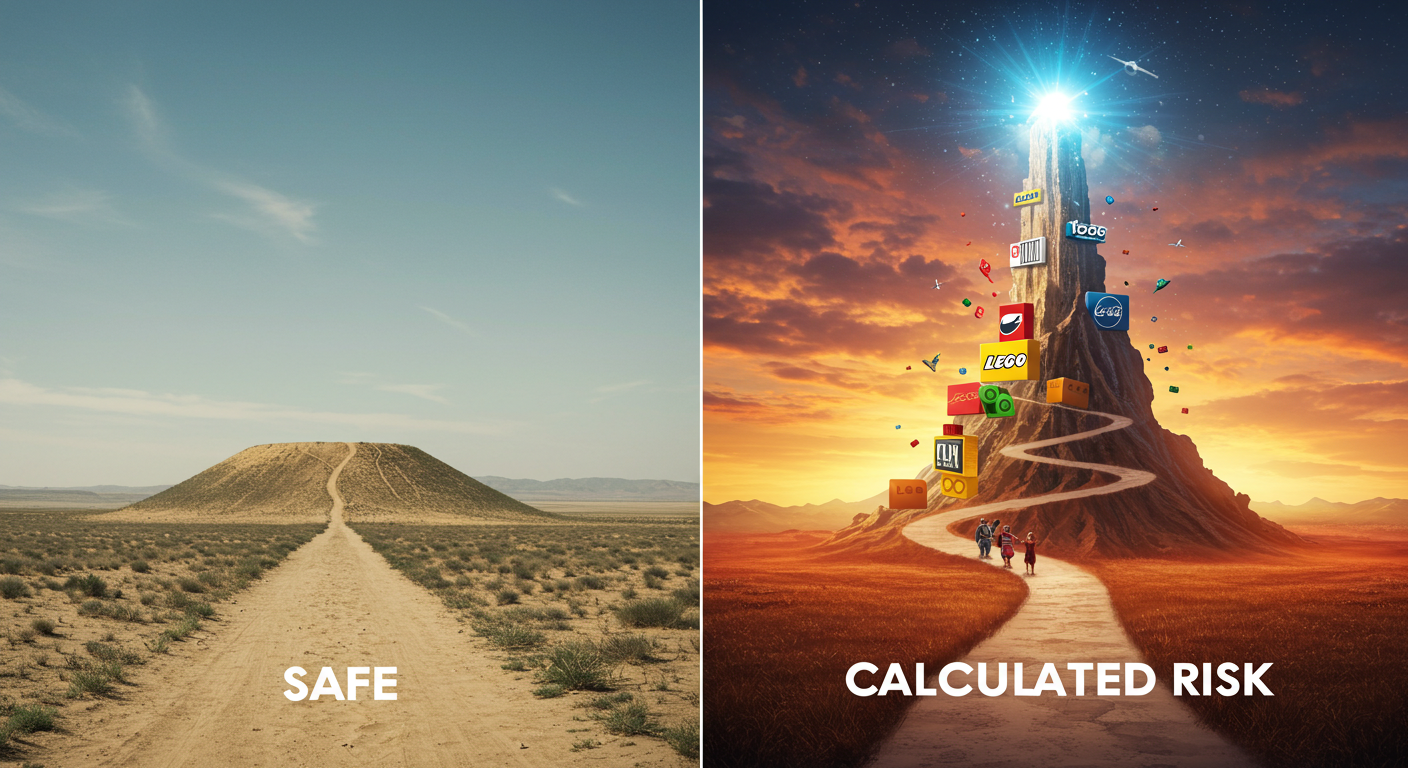In marketing, the term “safe” may evoke a sense of security. It prevents blowback, satisfies internal stakeholders, and checks all the right boxes without causing any controversy. Yet, in today’s hyper-competitive attention economy, playing it safe is one of the riskiest decisions a business can make.
In a market where everyone is wary, safe is invisible.
The Comfort Trap
When brands stick to what they know, they do so because they think it makes them feel secure. They use old strategies, rely on creative ideas that have been used before, and stay away from issues or views that could lead to a discussion.
The safety zone is nice, but it can make you stay in the same place for too long. Campaigns lose their fire. Audiences lose interest. Competitors, especially brave rebels, take over the mental room you’ve made.
Being safe might keep you from getting criticized in the short term, but it almost always makes you irrelevant in the long term.
Why Calculated Risk Works
Not every risk is a bad idea. Brands that are strategic take chances that align with their values, connect with their audiences more deeply, and move the category forward.
Some people didn’t like Nike’s Colin Kaepernick campaign, but it made loyal customers even more loyal, which led to record sales. LEGO’s sets for both boys and girls were a culture statement that was felt around the world and opened up new market areas.
What’s the link? These were not just random pranks. They came from a deep knowledge of what the audience values and what the company stands for.
Three Smarter Ways to Take Risks
- Pay Attention Around the Edges: Pay attention to what people are saying in new channels, niche groups, and societal undercurrents. New ideas often begin on the edges.
- Try Before You Leap: Try out big ideas with smaller groups of people before getting all in. A micro-campaign can help you decide if a risk is worth taking on a larger scale.
- Match Risk with Goal: Arguments that aren’t about anything are just noise. When you take risks that are in line with your brand’s “why,” you get impact, not just a reaction.
The Opportunity is Discomfort
Discomfort is a catalyst for growth. It represents the dynamic interplay between safety and transformative potential. When brands strategically lean into discomfort, they capture attention and cultivate cultural relevance.
In an age where attention is the most important currency, playing things safe is the quickest way to slip into obscurity. The brands that will succeed are not those that shun all risk; rather, they are those that take the appropriate risks.
Because the true risk is not being controversial. The true risk is being forgotten.
ALSO WATCH MARKETING EDGE ONTV







Comment
No comments found.